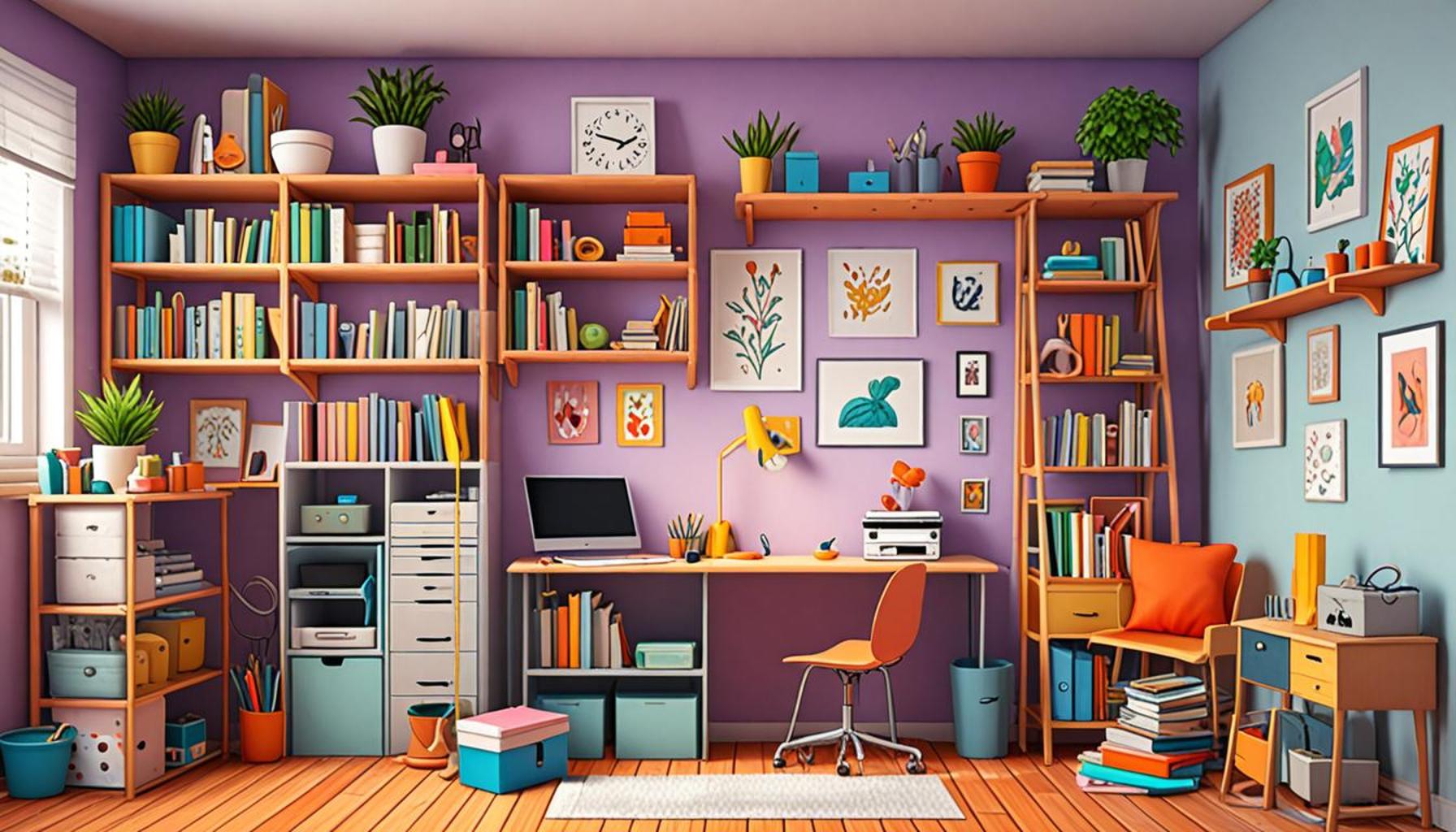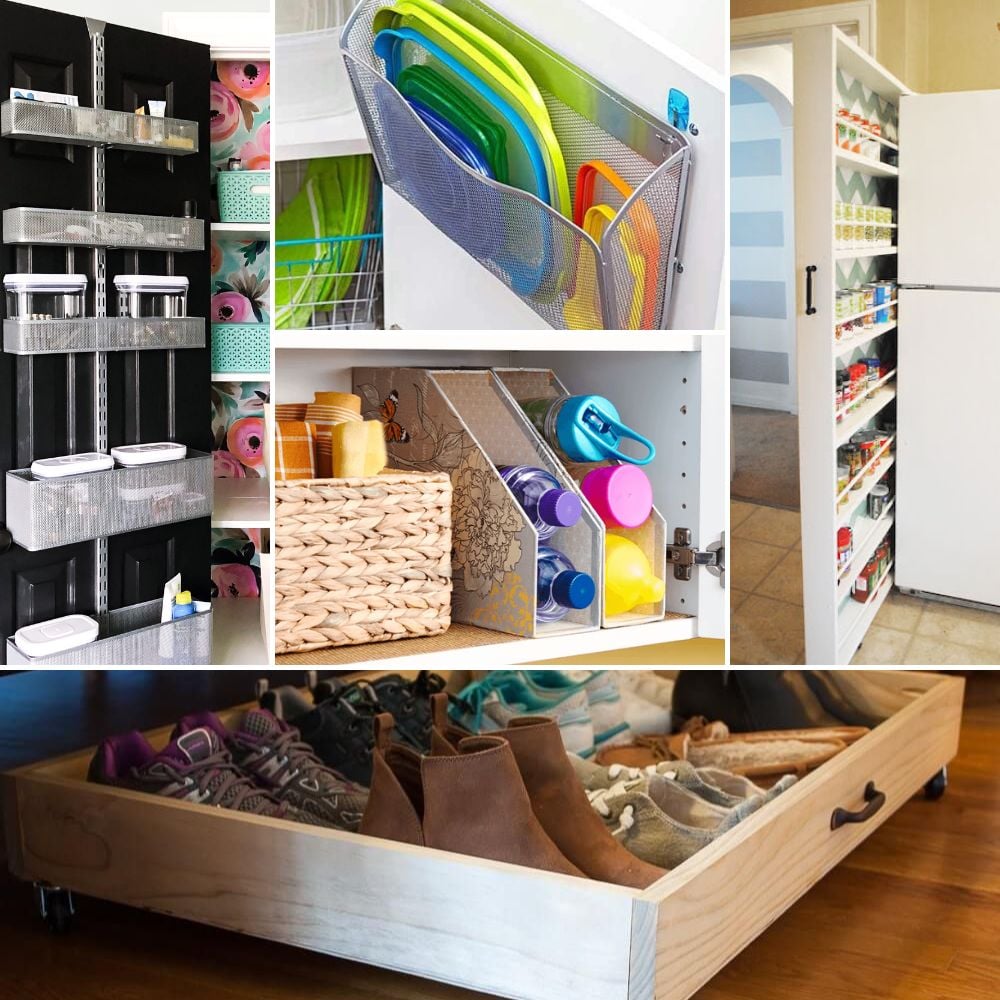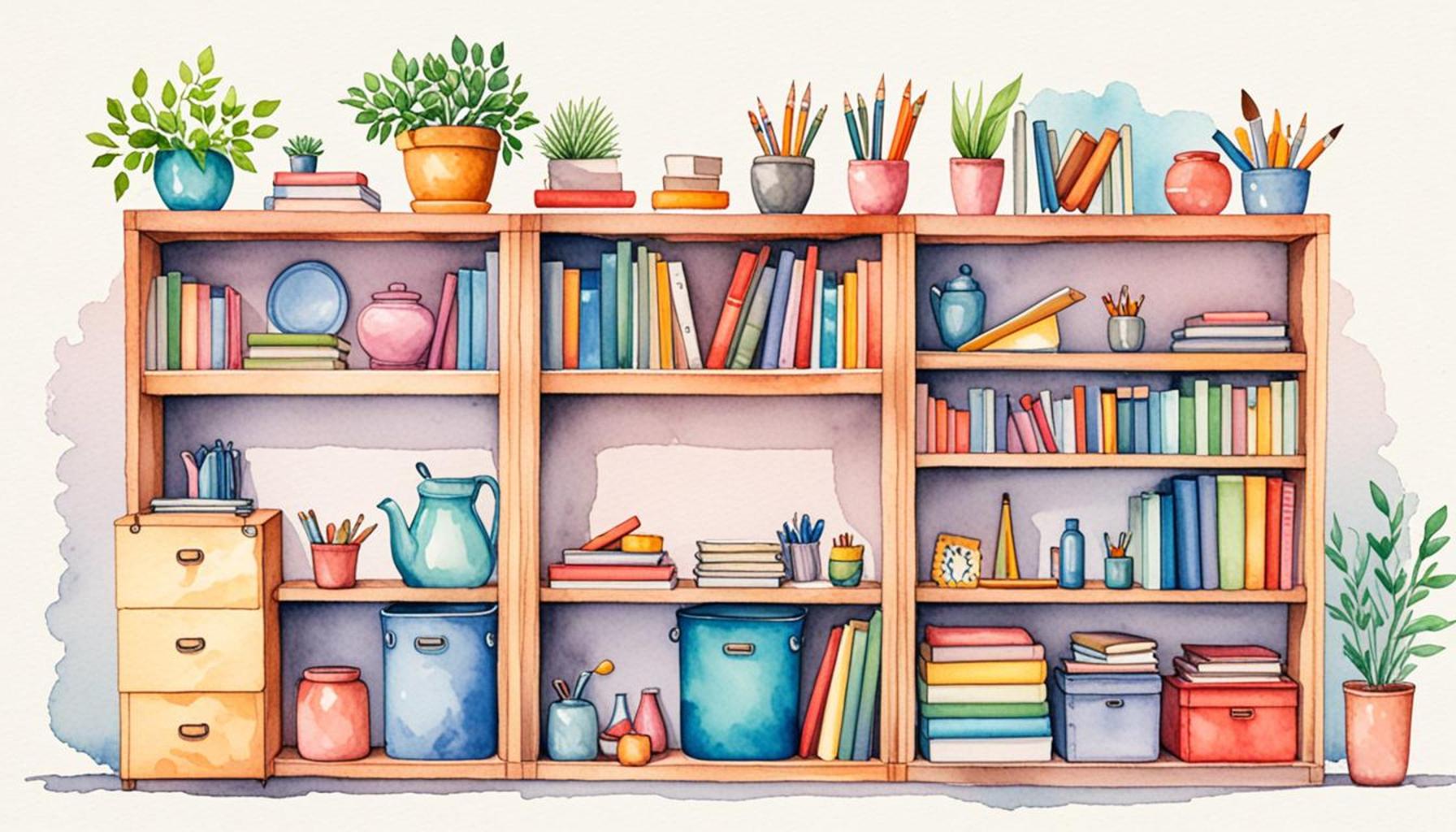How to Create an Effective Decluttering System for Small Spaces

Overcoming Organizational Challenges in Small Spaces
Living in small spaces can present unique challenges, especially when it comes to organization. As more Americans embrace minimalism and sustainable living, the need for an effective decluttering system has never been more vital. A well-structured approach can transform chaos into calm, allowing residents to enjoy the full potential of their living environment.
Key Aspects of an Effective Decluttering System
Consider the following key aspects when developing your decluttering system:
- Assess Your Space: Start by carefully analyzing your living area. Take note of cluttered zones like the kitchen counter, living room, or bedroom. Identify which areas hinder your daily routine. For example, a crowded entryway can slow down morning preparations, while an overcrowded kitchen can discourage home-cooked meals.
- Define Your Goals: Set clear, achievable objectives for decluttering your space. Whether it’s reducing visible clutter by 50% or organizing a specific room by the end of the week, having specific targets can help you stay motivated. Documenting these goals can also provide you with a tangible sense of progress.
- Establish a Routine: Consistency is key to maintaining organization. Create a regular schedule that fits into your lifestyle, whether it’s a short fifteen minutes of tidying up each day or a dedicated decluttering session every Saturday. This can help ensure that the space remains clutter-free over time.
Utilizing this systematic approach can help you navigate the clutter, leading to a more functional living environment. For instance, the trend of multi-functional furniture is on the rise—think ottomans with storage capabilities or foldable tables that can fit various spaces without sacrificing comfort or functionality. Creative storage solutions such as under-bed boxes or wall-mounted shelves can also provide innovative ways to make the most out of every inch of your home.
Practical Steps for Decluttering
In this article, we will explore practical steps and effective strategies to develop a decluttering system tailored to the limitations of small spaces. Begin by sorting items into categories: Keep, Donate, and Discard. This method allows you to visually comprehend the volume of items you own and make difficult decisions about what to keep.
Additionally, consider the “One In, One Out” rule. For every new item you bring into your home, aim to remove an old one. This practice not only curtails excess but also encourages mindful purchasing. Implementing these strategies can help you reclaim your space, turning it from a cluttered chaos into a serene oasis amidst the hustle and bustle of daily life.

Get ready to discover how to reclaim your space, one item at a time as you dive into a journey of intentional living that allows for physical and mental clarity.
DISCOVER MORE: Click here for your step-by-step decluttering guide
Strategies to Streamline Your Decluttering Efforts
Creating an effective decluttering system for small spaces requires a blend of strategy, creativity, and commitment. By breaking down the process into manageable steps, you can set yourself up for success and ensure that your living area remains organized for the long haul. Here are some actionable strategies to consider:
Sort and Categorize
One of the most fundamental steps in decluttering is to sort items into categories. This can help clarify what you truly need and what can be let go. Start by choosing a single area, such as a closet or a corner of your living room, and separate items into the following categories:
- Keep: Items that you use regularly or have sentimental value.
- Donate: Good-condition items that you no longer need but may be useful to others.
- Discard: Broken, obsolete, or damaged items that serve no purpose.
By visualizing the amount of stuff you own, you can make informed decisions about what deserves a place in your space. This not only reduces clutter but also contributes to a simplified lifestyle.
Maximize Vertical Space
In small living environments, vertical space often goes underutilized. Investing in tall bookshelves or installing wall-mounted shelves can enhance your storage while keeping the floor clear. Consider using decorative boxes or baskets to tidy up smaller items on these shelves, creating both a functional and aesthetically pleasing display. Here are a few tips to maximize vertical space:
- Install hooks for hanging items like bags or hats.
- Use tiered shelves for easy access to smaller items.
- Hang a pegboard in the kitchen or workshop for tools and utensils.
Utilizing your vertical space efficiently can create the illusion of a larger area, making everyday life feel less cramped.
Adopt Multi-Functional Furniture
As mentioned previously, multi-functional furniture is a game changer for small spaces. Items such as sofas with hidden storage, coffee tables that can convert into dining tables, or ottomans that double as storage bins can significantly reduce clutter. These versatile pieces free up floor space and offer a dual purpose, enabling you to maintain a tidy home without compromising on style. Additionally, consider choosing furniture with built-in storage, like beds with drawers underneath, as this cleverly conceals chaos while allowing for easy access to your belongings.
Implementing these strategies into your decluttering system can help transform your small space into an organized haven, where every item has its place, and clutter becomes a thing of the past. With commitment and creativity, you can turn the challenges of small-space living into opportunities for simplicity and peace.
Understanding Your Space
Creating an effective decluttering system for small spaces begins with understanding the unique challenges posed by limited square footage. In small areas, every inch counts, and developing an awareness of how your space is utilized will help inform your decluttering approach. Begin by taking inventory of your belongings and assessing which items are essential and which can be let go. This will help you create more space and establish an organized environment that is both functional and aesthetically pleasing.
Implementing Storage Solutions
Utilizing smart storage solutions is key to maximizing the space available in your small home. Consider options such as under-bed storage boxes, multi-functional furniture, and vertical shelving. Each of these ideas not only facilitates an efficient decluttering system but also allows for easier access to the items you decide to keep. You can also explore modular storage systems that can be adapted to suit your changing needs over time.
Developing a Decluttering Routine
To maintain an organized small space, it’s crucial to develop a decluttering routine. Set aside dedicated time each week to reassess your belongings and determine if any new items should be added to your “to declutter” list. This continuous cycle can prevent clutter from building back up and ensure that your home remains a sanctuary of simplicity. Keep in mind that regular reviews of your space will help to reinforce your commitment to a clutter-free lifestyle.
Creating a ‘One In, One Out’ Rule
One effective personal policy to adopt is the “one in, one out” rule. This principle encourages you to consider the impact of new purchases on your limited space. For every new item you bring into your home, choose one to donate or discard. This practice not only aids in sustaining your decluttered space but also cultivates mindful consumption habits, promoting a minimalist lifestyle that is both rewarding and refreshing.
Seeking Inspiration and Support
Lastly, don’t hesitate to seek inspiration from various decluttering resources available online, such as blogs, podcasts, and social media groups dedicated to small space organization. Engaging with others who share the same challenges can provide both motivation and practical tips. Remember, you are not alone in this endeavor, and learning from others can offer new perspectives and solutions to your decluttering journey.
Key Tips to Maintain Your System
To maintain your newly created decluttering system, aim for consistency. Regularly revisit your organization strategies, reassess your storage solutions, and adapt as necessary to keep pace with your evolving lifestyle. Creating and sustaining an effective decluttering system not only enhances your small space but also fosters a more serene and productive environment.
| Category | Details |
|---|---|
| Understanding Your Space | Conduct an inventory of belongings to distinguish essentials from non-essentials. |
| Implementing Storage Solutions | Utilize under-bed storage and vertical shelving to maximize limited space. |
| Development of Routine | Set weekly assessments to maintain an organized environment. |
| Mindful Consumption | Adopt a “one in, one out” policy to limit clutter accumulation. |
DISCOVER MORE: Click here to dive deeper
Incorporating Organizational Tools and Mindfulness
While sorting and maximizing space are key steps in establishing a decluttering system, the use of organizational tools can greatly enhance your efforts. Additionally, fostering a mindful approach to your belongings ensures that clutter does not quietly creep back into your life. Here are some methods to incorporate into your effective decluttering strategy:
Utilize Clear Storage Solutions
Transparency is crucial when it comes to effectively managing your belongings in small spaces. Clear storage bins allow you to quickly access items without needing to dig through opaque boxes. Labeling each bin can elevate your organizational game, making it easy to identify what’s inside at a glance. Consider organizing your items by category and storing seasonal items separately, ensuring that your frequently used items are accessible while less essential belongings are neatly tucked away.
Additionally, using under-bed storage or vertical shoe racks can help you capitalize on every inch of your living space without sacrificing organization. Under-bed bins are particularly advantageous for stowing away out-of-season clothing, extra bedding, or even unused decorations.
Implement a “One In, One Out” Rule
To maintain a clutter-free environment, consider adopting a “one in, one out” philosophy. This concept is simple yet effective: for every new item you bring into your home, you must let go of one item. This practice encourages mindfulness around purchases and helps prevent accumulation. For instance, if you buy a new shirt, take the time to donate an older one from your wardrobe. By creating this balance, you can ensure that your small space remains functional and organized, rather than overflowing with unnecessary items.
Set a Decluttering Schedule
Consistency is the key to achieving a lasting decluttering system. Establish a regular decluttering schedule to prevent the build-up of clutter. This can be as simple as dedicating a few minutes each week to reevaluate specific areas in your home. Perhaps choose Sundays to spend 15-30 minutes organizing your workspace or closet. This habit will help you stay conscious of the items you own and can serve as a reminder to reassess what is essential in your life.
Practice Mindful Consumption
Mindfulness extends beyond organization; it also involves reconsidering how and why we accumulate items. Before purchasing something new, take a moment to ask yourself about its necessity and potential usage. This shift in perspective can be pivotal in maintaining an effective decluttering system in the long term. Utilizing wait periods for purchases—kicking off with a short 24-hour hold—can help you assess your desire for an item, reducing impulse buys and fostering a clutter-free mindset.
By implementing these robust strategies, transformative small-space living is entirely attainable. From purposeful organization and the “one in, one out” principle to mindful consumption, a tailored decluttering system will invigorate both your physical space and mental clarity. As you navigate through your belongings, remember that this journey is not merely about creating a tidy environment—it’s about embracing a lifestyle that values simplicity and intentionality.
DIVE DEEPER: Click here to uncover digital decluttering tips
Conclusion
Creating an effective decluttering system for small spaces is not just a task; it is a transformative process that leads to enhanced organization, improved mental clarity, and a more fulfilling living environment. By integrating transparent storage solutions and adhering to the “one in, one out” rule, you can maintain a balanced and functional space, preventing clutter from overwhelming your life. Regularly dedicating time to declutter ensures that your home remains a sanctuary rather than a source of stress.
Moreover, practicing mindful consumption before bringing new items into your home propels you towards a lifestyle of intentionality and simplicity. This shift not only helps in conserving space but also contributes to your overall well-being. As you develop your personalized decluttering strategy, keep in mind that this journey is about more than mere aesthetics; it’s about creating a harmonious living space that reflects your values and priorities.
In an era where many live in smaller homes or apartments, an effective decluttering system is an essential skill. Embrace the power of organization, remain committed to your decluttering schedule, and accept that less truly can be more. By fostering these habits, you can liberate your small space from clutter and make room for what truly matters. Start your decluttering journey today, and discover a lifestyle that celebrates simplicity and serenity.


